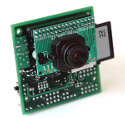Current Projects
 Sensor Andrew: A Living Laboratory for Infrastructure Sensing
Sensor Andrew: A Living Laboratory for Infrastructure Sensing
Sensor Andrew is a multi-disciplinary campus-wide scalable sensor
network that is designed to host a wide range of sensing and low-power
applications. The goals of Sensor Andrew are to support
ubiquitous large-scale monitoring and control of infrastructure in a
way that is extensible, easy to use, and provides security while
maintaining privacy. Target applications currently being developed on
the Project Anonymous network include infrastructure monitoring,
first-responder support, quality of life for the disabled, water
distribution systems monitoring and optimization, building power
monitoring and control, social networking, and biometric sensors for
campus security.
 Nano-RK: A Real-Time Sensor Networking Operating System
Nano-RK: A Real-Time Sensor Networking Operating System
Nano-RK is a reservation-based real-time operating system (RTOS) with multi-hop networking support for use in wireless sensor networks. Nano-RK currently runs on the FireFly Sensor Networking Platform as well as the MicaZ motes. It includes a light-weight embedded resource kernel (RK) with rich functionality and timing support using less than 2KB of RAM and 16KB of ROM. Nano-RK supports fixed-priority preemptive multitasking for ensuring that task deadlines are met, along with support for CPU, network, as well as, sensor and actuator reservations. Tasks can specify their resource demands and the operating system provides timely, guaranteed and controlled access to CPU cycles and network packets. Together these resources form virtual energy reservations that allows the OS to enforce system and task level energy budgets.
 FireFly Real-Time Sensor Networking Platform
FireFly Real-Time Sensor Networking Platform
The FireFly Sensor Networking Platform is a low-cost low-power hardware platform. In order to better support real-time applications, the system is built around maintaining global time synchronization. The main Firefly board uses an Atmel ATmega1281 8-bit micro-controller with 8KB of RAM and 128KB of ROM along with TI's (formerly Chipcon) CC2420 IEEE 802.15.4 standard-compliant radio transceiver for communication. The maximum packet size supported by 802.15.4 is 128 bytes and the maximum raw data rate is 250Kbps.
 CMUcam 3
CMUcam 3
The goal of the CMUcam project is to provide simple vision capabilities to small embedded systems in the form of an intelligent sensor. The CMUcam3 extends upon this idea by providing a flexible and easy to use open source development environment that complements a low cost hardware platform. The CMUcam3 is an ARM7TDMI based fully programmable embedded computer vision sensor. The main processor is the NXP LPC2106 connected to an Omnivision CMOS camera sensor module. Custom C code can be developed for the CMUcam3 using a port of the GNU toolchain along with a set of open source libraries and example programs. Executables can be flashed onto the board using the serial port with no external downloading hardware required.
Previous Projects (no longer active)
 eWatch
eWatch
eWatch is a wearable computing system that can be worn on your wrist. It has several sensors that gather information about the user and the environment. It can attract the user's attention with visual and/or tactile notifications. eWatch supports wireless Bluetooth communication which allows it to interface with a computer, PDA, or cellular phone. The wrist watch form factor allows open exposure to the environment making it ideal for ascertaining user state information. This also means that eWatch is instantly viewable and always accessible to the user.
![]() CMUcam 2
CMUcam 2
The CMUcam2 includes all of the functionality of the original CMUcam in an enhanced form and a lot of new functionality. It uses an updated processor that has more RAM, more ROM, and more I/O pins. This allowed us to add functionality like frame differencing, edge detection, and color histogramming. The CMUcam2 also uses a frame buffer which allows for faster processing, multiple operations per frame, more control over communication speeds and better looking frame dumps.
 CMUcam 1
CMUcam 1
An embedded color vision system. Basic image processing on a microcontroller.
 Bluetooth Orb
Bluetooth Orb
This site shows how to modify an ambient orb to support the use of bluetooth to change color upon receiving email.
Fun with Robots
![]() Barney mobot
Barney mobot
Barney is the robot that won the 2002 mobot slalom race at CMU. It was the first ever undergraduate mobot to complete the course. This link
includes most of our design specs, many issues we encountered and a video
of the actual race.
![]() Low Cost UAV
Low Cost UAV
This project is targeted towards surveillance or search and rescue situations were there is a need for quickly deployable remote telepresents. Our goal of creating a simplistic yet functional design is an ideal research and teaching platform for aerial robotics.
![]() DUI mobot
DUI mobot
DUI is a mobot made for the 2001 mobot slalom race at CMU. This link
includes some design specs and a video of the actual race.
![]() Flying Ginsu
Flying Ginsu
The Flying Ginsu was an autonomous hovercraft that uses refocused optical mice to track its velocity.
It was shown at AAAI 2001 in Seattle.